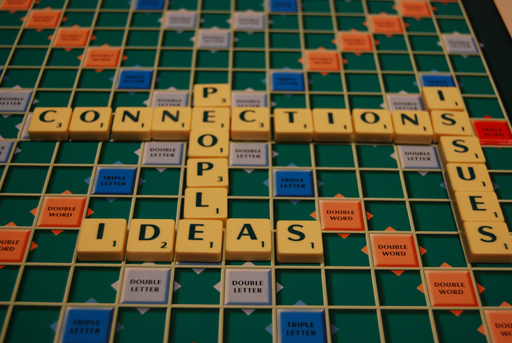5.4 Connectivism

Connectivism has been described by George Siemens, its original proponent, as a learning theory for the digital age. As such, connectivism is often referenced when people talk about MOOCs or learning with OER. Most learning theories were developed prior to the digital, networked age and have been adapted to fit with it, whereas connectivism was developed specifically in response to the possibilities offered by a global network. The question ‘Does this give us anything new?’ is also relevant for connectivism, as some of the criticism about it has been that connectivism repackages existing ideas.
In the next activity we’d like you to read a paper by George Siemens outlining his theory of connectivism. We’d then like you to read a blog post by Stephen Downes in which he explains his perspective on what connectivism is, and also attempts to address some criticisms of it.
Activity 18: Theory of connectivism and its critics
- Read Siemens (2005), Connectivism: a learning theory for the digital age [Tip: hold Ctrl and click a link to open it in a new tab. (Hide tip)] .
- Read Downes (2007), What connectivism is.
We can view connectivism as a perspective on learning, which places the network at the core of its approach. While other learning theories may be applicable in this context, none are so deliberately focused on the importance of the network. Connectivism is not without its critics, and the aim of this activity is for you to explore whether you feel it offers a useful framework for considering education.
Perhaps the best way to think about connectivism is to implement it, so that is what we’d like you to do in the next activity.
Activity 19: Implementing connectivism
In this activity you will be devising a course that takes a strong connectivism approach, based on some key principles devised by Siemens:
- Learning and knowledge rests in diversity of opinions.
- Learning is a process of connecting specialised nodes or information sources.
- Learning may reside in non-human appliances.
- Capacity to know more is more critical than what is currently known.
- Nurturing and maintaining connections is needed to facilitate continual learning.
- Ability to see connections between fields, ideas and concepts is a core skill.
- Currency (accurate, up-to-date knowledge) is the intent of all connectivist learning activities.
- Decision making is itself a learning process. Choosing what to learn and the meaning of incoming information is seen through the lens of a shifting reality. While there is a right answer now, it may be wrong tomorrow due to alterations in the information climate affecting the decision.
- Take the description of the short course on digital skills that you developed in Week 2 and recast it, so that it adopts a highly connectivist approach. Or, if you prefer, you could take this ‘Open education’ open course as an example and recast it in a more connectivist model, or another course you have familiarity with.
- You should take each of the principles set out above and state how they are realised in your course, either as a general principle or by giving an example activity.
- Blog your course outline, along with how the principles are realised, and if you are content to use Twitter to share your thoughts, Tweet about your blog post using the hashtags #h817open and #Activity19.
